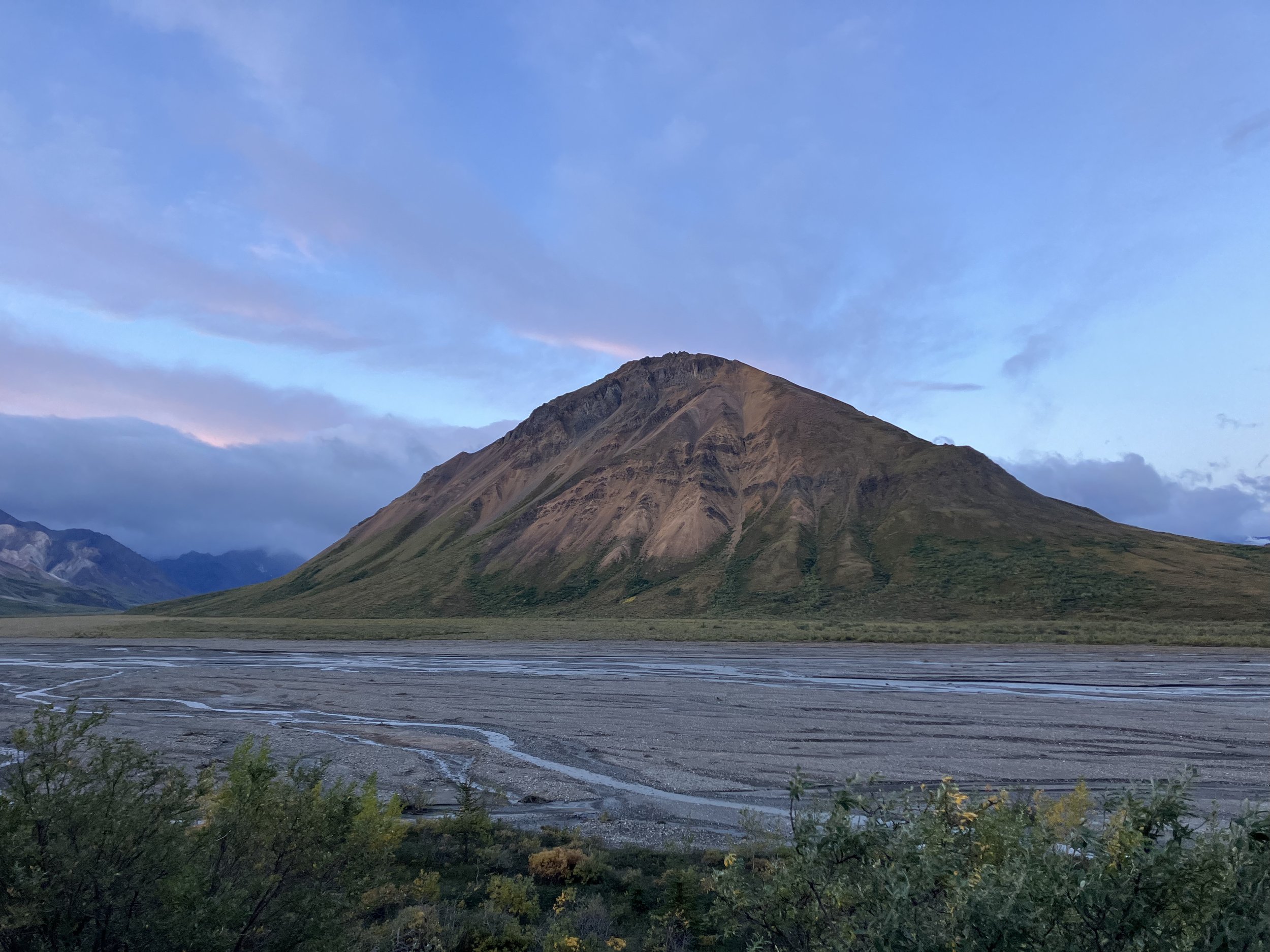Denali Landslide - Why is The Denali Park Road Closed?
As many know, the Denali Park Road is currently closed at milepost 43. This is due to a serious landslide in Denali - more specifically the Pretty Rocks Landslide. In this article, I will dive into how long the road is expected to be closed, when it is expected to open, what has caused this Denali landslide, and what the National Park Service and its contractors are doing to prevent it from happening again.
Unfortunately, for those asking if the Denali Park Road will open in 2024, or even 2025 the answer is no. The road is expected to remain closed through part of the summer of 2026, with a hope to reopen it via a new bridge sometime in July of 2026. The landslide has kept the Park Road closed since 2021, which begs the question - why is it taking so long? The answer to that question requires a deep dive of its own. We normally think of landslides as a quick and destructive event that can then be cleaned up and rebuilt from afterwards. This is not the case with the Pretty Rocks Landslide. To understand what makes this landslide unique, we must first understand permafrost.
Permafrost is technically any ground that’s frozen for two or more years consecutively. Much of the land in Denali National Park has permafrost underneath the surface. Over thousands of years, this permafrost accumulates, with the ice expanding and pushing the rock and debris further apart. This means that much of the landmass in Denali actually isn’t land at all. It’s ice! While this is kind of cool, it also causes a lot of problems, especially when paired with climate change. Denali has seen more rapid warming over the last century than any other National Park. It has been warming at a rate of 7.7 degrees fahrenheit per century, which doesn’t sound very high until you realize that California has only been warming at a rate of 2.3 degrees per century.
Because of this rapid warming, the permafrost in Denali is quickly melting. As it melts the volume of ice shrinks, and the water that it melts into liquifies the soil around it and pours down with gravity. In the case of Pretty Rocks, and several other locations in Denali, this results in a landslide that can last for centuries. In fact, that’s exactly what the Pretty Rocks landslide is. The landslide actually started sometime before the 1960’s!
It has been active since then, but the fact that it only slid a couple of inches per year made it easy to control until around 2014. At that time, it started speeding up, first to inches per month, then inches per day, and finally nearly an inch per hour in 2021. Up until this point, the Park Service’s solution to the problem had been to dump hundreds of truckloads of gravel onto the road to keep it driveable and open. As the landslide continued to accelerate, the Park Service finally had to abandon this tactic in 2021, closing the road in order to reassess and make a different plan.
Unfortunately this issue of permafrost-caused instability is not unique to the Pretty Rocks landslide. In fact, there are over 140 “unstable slopes” in Denali National Park, with some along the Park Road likely to turn out in a similar way to Pretty Rocks. Recognizing this, the Park Service decided they had to make a plan that wouldn’t just get around the Pretty Rocks landslide, but also deal with the other unstable slopes that were likely to behave the same way in the future.
The lack of service to the Park Road has been having less affect on tourism to the Park than originally expected. By and large, it seems that the lack of access isn’t stopping people from coming to the Park, although there is expected to be a tourism increase when the road reopens in 2026. Many tour companies have remained largely unchanged by the landslide, as most operate just outside or on the outskirts of Denali National Park. The most affected town has been Kantishna, with it seeing almost all of its traffic over the last few years come in the form of airplane.
So what’s being done to solve the Denali landslide problem?
A plan has been put in place to deal with not only the Pretty Rocks landslide, but also the other unstable slopes along the Park Road. This plan is called the Polychrome Area Improvements Plan, and the good news is that the Parks Service has already chosen a contractor - Granite Construction, based in California. The project is large and complicated, and while a plan is in place, it will take a long time to complete.
To understand why this plan is so ambitious, we need to first know exactly what is being done. First, to bypass the Pretty Rocks landslide, a 475-foot steel truss bridge will be constructed across the affected area. In order to complete this project, significant excavation will need to take place on either side of the bridge in order to make room for the construction to take place. They will also install large 23 thermosiphons (devices that dissipate heat through the heating and cooling of water) in order to ensure the bridge’s longevity facing continued permafrost thaw. Retaining walls and other soil stabilization methods will be added as well. As you can probably, this project is quite the undertaking and the price tag reflects that. The government contract with Granite Construction totals over $100 million.
Sources:

